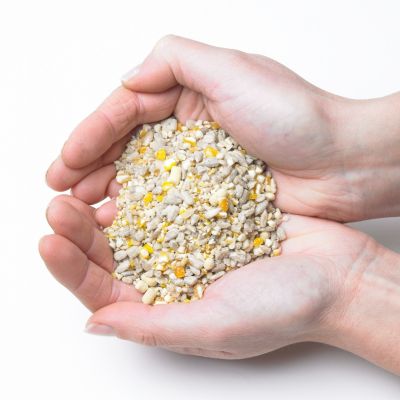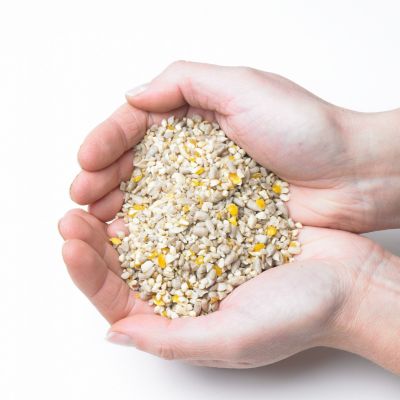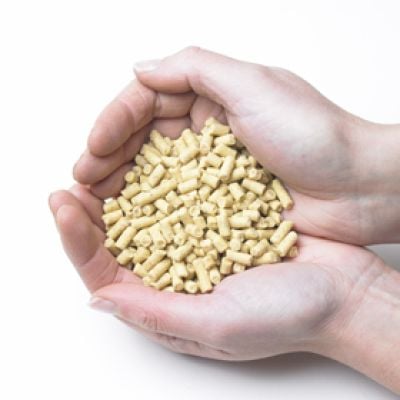Jay Factfile
Although the Jay is by far the most colourful and striking of the crow family in the UK, it is a shy bird of typically woodland habitat and therefore often hard to see. Its plumage is very attractive, with pinky-brown tones overall, black tail, white rump, black facial stripe like a moustache, plus a striking blue flash on the wings. Its loud shrieking call often gives its presence away in dense woodland. It is not a common garden visitor, but may visit feeding stations early in the morning in some areas where there is suitable habitat very close by.
Video footage of Jays
Jay nesting and breeding habits
The nest is built in a tree and generally against the trunk or in a fork, and usually at least two metres above the ground. It is well hidden and basically consists of twigs, plants stems, and may also include mud as a binding material. It is lined with fine plant material and hair, making an especially neat inner-cup. Incubation of the five or six eggs is by both male and female birds, with both sexes also sharing the task of bringing food to their young. There is one brood per season.
Jay history and population trends
The UK population shows long-term stability overall, though more short-term has shown quite sharp declines and spells of recovery in recent decades.
Behaviour traits of Jays
Outside of the breeding season Jays may form small groups, though generally speaking they are not a sociable bird and even a breeding pair do not spend that much time together. Like all members of the crow family, Jays are very intelligent. A measure of this intelligence is their ability to remember where they buried acorns to feed on during the winter months. To give this some context, a single Jay may bury up to 3000 acorns in one season – though they don’t of course remember where they all are, and hence why Jays are rightly credited with helping to spread oak trees.
Jay diet and food
The Jay’s diet, like most corvids, is highly varied and includes insects (especially caterpillars and beetles), earthworms, mice, eggs and young birds, seeds, grain and fruit. It has a particular liking for acorns and these form a key part of the diet in the autumn and winter months, with the supply for the latter coming from acorns it hordes in the former. The species is generally not easy to attract to feeding stations, however, in suitable areas, will sometimes come to bird tables and ground feeders to take whatever seed is available.
What should I feed Jays?
Jays are extremely shy and wary and therefore are not easily attracted to gardens by food. However and over time, they might be attracted by the following products.
Bird Food
Frequently Asked Questions
What do Jays eat in the UK?
The primary food of the Jay is acorns, nuts and invertebrates including insects, but they will also eat nestlings of other bird species and small mammals such as mice.
How do I attract Jays to my garden UK?
Jays are a difficult bird species to attract to gardens because they’re so shy – certainly compared to other species of Corvid (the crow family) such as Magpies and Jackdaws. However, it can be possible to tempt them in with seed such as sunflower hearts which is either spread directly on the ground, a bird table or ground tray, and in all cases if the food is set well back from the house and therefore the Jays will feel less threatened. Jays also avoid open areas, so food put out near trees may also be more acceptable to them.
Do Jays come into gardens?
Jays will sometimes come into gardens if there is food available and plenty of cover from mature trees. However, they are a very shy species and extremely wary of humans.
Are male and female Jays the same?
Yes, male and female Jays look the same with near identical plumage. That said, male Jays are usually slightly larger than females, but this would only be noticeable if both sexes were seen together – which is rather unlikely given how shy and secretive the species is.
How do you feed Jays but not pigeons?
You really can’t, as both Jays and Wood pigeons are a similar size and both typically feed on the ground. It’s also the case that Wood pigeons are far less shy and wary of humans compared to Jays, so if you’re lucky enough to attract Jays with food such as sunflower hearts on the ground or a bird table, then Wood pigeons are almost bound to also be attracted.










